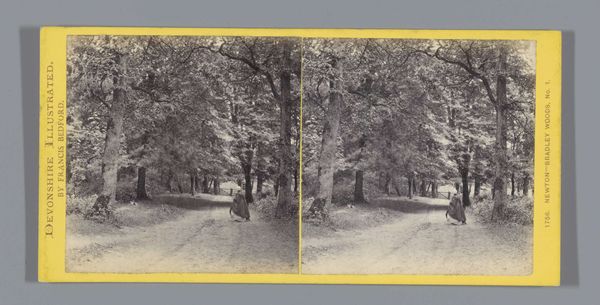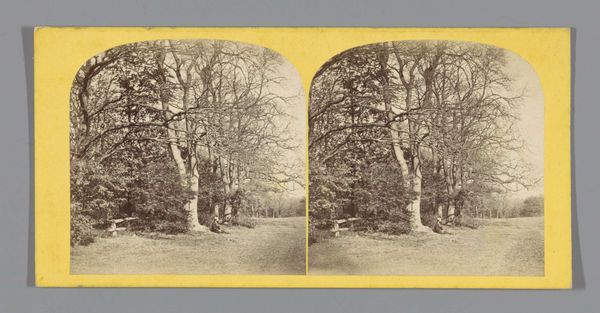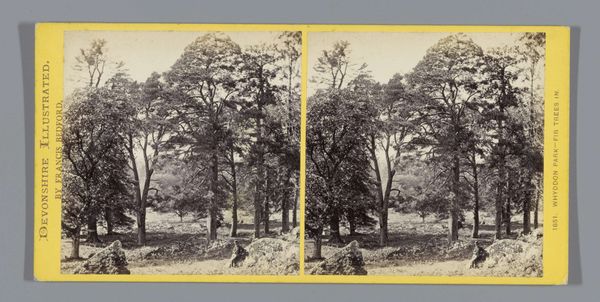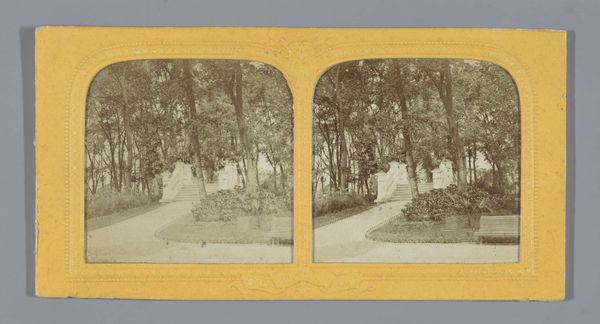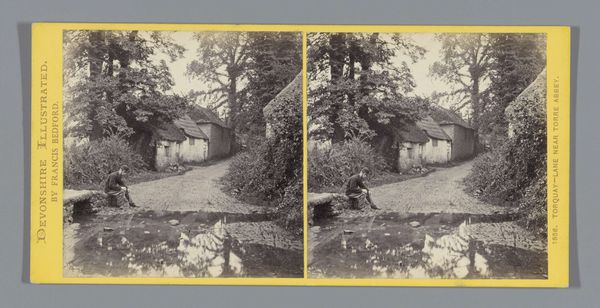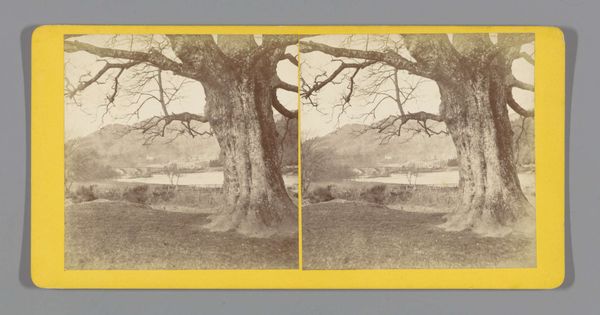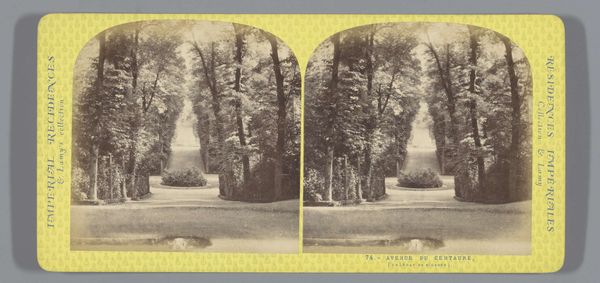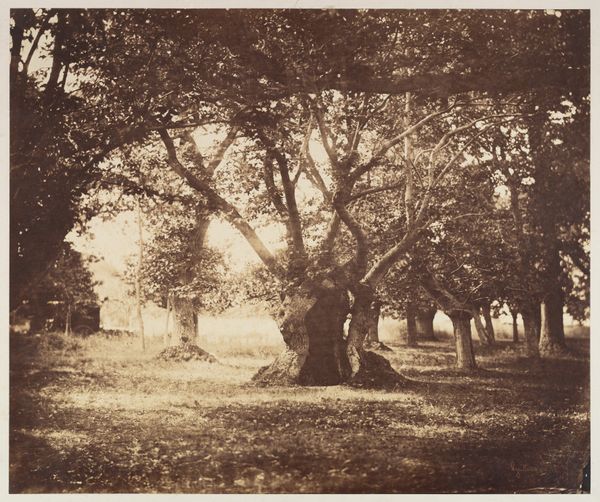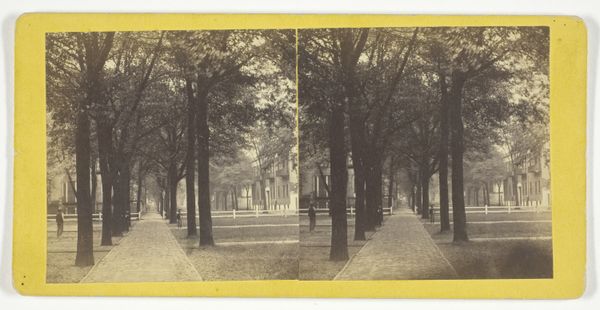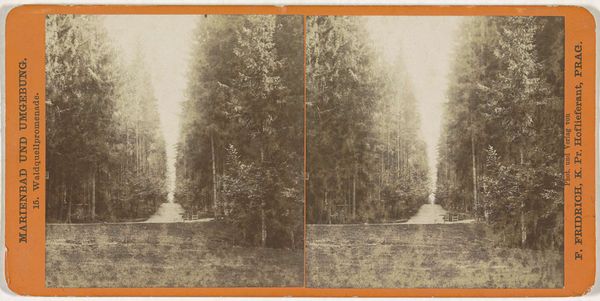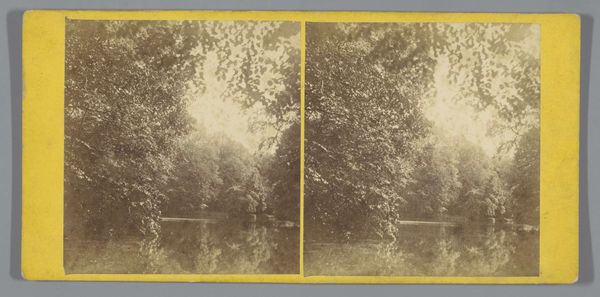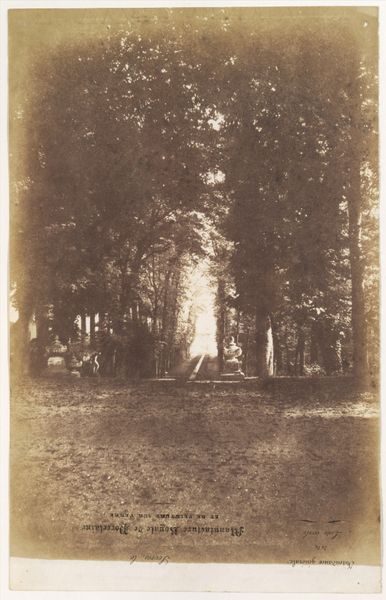
Dimensions: height 85 mm, width 170 mm
Copyright: Rijks Museum: Open Domain
Editor: Here we have Francis Bedford’s "Toegangslaan van de Torre Abbey," a gelatin-silver print made sometime between 1850 and 1880. The scene is so calm, but the trees seem to reach in and crowd the path forward. What do you see in this piece? Curator: As a materialist, I’m drawn to the materiality of this photograph. Gelatin-silver prints emerged in a specific historical context, driven by industrial advancements in chemistry and manufacturing. What does the process of creating this image – coating the paper, exposing it to light, developing it – tell us about the relationship between technology and art in the 19th century? Consider how readily photographs like this one could be reproduced, marketed, and consumed as commodities, thereby documenting and reshaping ideas around landscape, progress, and national identity. Editor: That’s a very interesting take, how photography helped shape ideas. But how do you connect the materiality of photography to the specific scene Bedford captured? Curator: The very act of photographing this "Avenue to Torre Abbey" elevates the abbey's access road. How much control over this supposed natural landscape was taken to promote its picturesque charm? Editor: It seems almost propagandistic; now that you mention it. The composition invites the viewer along the road, encouraging you to literally "buy into" the scene! Curator: Precisely! And think about who could afford a photograph like this. The ability to purchase and possess such an image speaks volumes about social class and the emerging culture of consumerism during the Victorian era. It becomes not just an image, but a product intertwined with complex social and economic narratives. Editor: I’d never considered how access to even simple photographic prints was so stratified in its own way. Thank you! I’ll keep that in mind from now on.
Comments
No comments
Be the first to comment and join the conversation on the ultimate creative platform.
